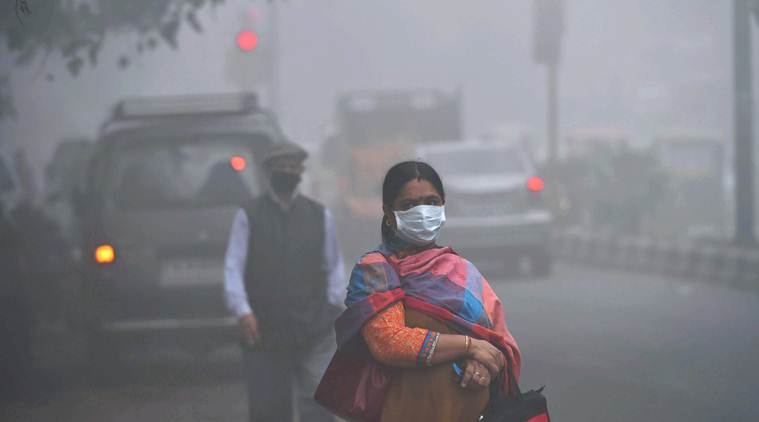Which is the most polluted city in the world? Delhi? Beijing? Well, not really. According to the World Health Organization (WHO), there is no comprehensive, worldwide database allowing precise answer to this question. Air quality monitoring is not being conducted in many cities where the pollution levels might be high. However, the available data indicate that cities with worst air pollution are mostly in Asia, with nine Indian cities appearing in the top 20. From those, four are in China and the rest are in Pakistan, Saudi Arabia and Iran – represented by Zabol at the top of the list.

New Delhi: A woman wears an anti-pollution mask as smog covers the capital’s skyline on Wednesday. Yesterday the air quality hit severe levels in New Delhi. PTI Photo by Shahbaz Khan
What about New Delhi?
Although the Indian Capital is daily on the news because of it’s bad air quality, there are cities displaying worse measurements, placing Delhi in 11th position of Earth’s most polluted cities for PM2.5 – the most dangerous for human health. This indicates one problem with WHO’s report: its database is only based on PM2.5 levels. Their latest research, released earlier this year, compared 3,000 cities in 103 countries in terms of PM2.5 and PM10 pollution. According to the study, more than 80% of people living in urban areas that monitor air pollution are exposed to air quality levels that exceed WHO’s limits, and populations in low-income cities and developing countries are the most impacted.
Even though Delhi doesn’t appear as the most polluted city in the world in WHO’s report, if you go through their database and keep scrolling down the list, you’ll realize that India and China have serious problems with air pollution, as many cities of both countries appear a lot of times even before European countries. The Guardian has listed most of the cities here. For Delhi, WHO took data from 10 monitoring stations, including the government open data and the US air quality mission both. On the other hand, for Zabol (on the top of the list) and many other cities from Africa and the middle east, the readings are not quite accurate.
What happens is that developing cities and nations are least equipped to monitor and manage their ambient environment, leading to imprecise readings and lack of information. In that matter, all data should be considered carefully, as the World Health Organization has already admitted in their reports.
As most of ground-based monitors are located in Europe and North America, there might be major blindspots where air pollution is affecting at least 1 billion people. Those blindspots are “stretching the length of Africa, across large parts of the former Soviet Union, south-east Asia and the Caribbean”, according to The Guardian. And they are the reason why we need to improve the way we monitor our air quality.
Despite all the issues with the lack of information regarding worldwide air pollution, one trend is for sure: while air quality has improved in Europe and high-income American countries in the last decade, the air in cities like Delhi has worsened as their populations and polluting industries have grown. Even though the number of monitoring stations in Delhi has double from 2014’s to 2016’s report, and there was the inclusion of 1,400 more cities in WHO’s list, the Indian Capital still the most polluted among mega cities (more than 14 million population), revealing that in the past 2 years the Indian government has put zero effort to change this trend. In the meanwhile, the question that remains is: until when?